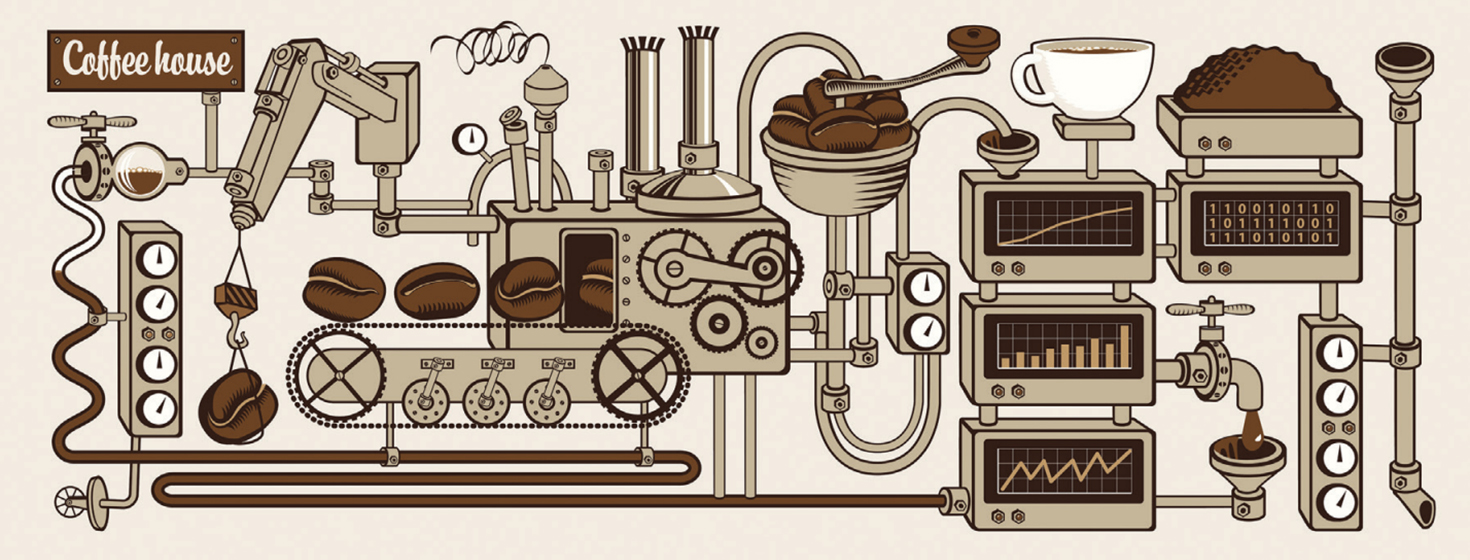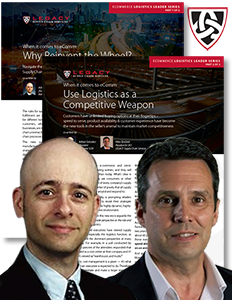Like Amazon’s Mantra, Your Supply Chain Needs to Focus on Customer Experience

Amazon’s supply chain begins with the customer and works backward, but they are not alone, other companies are paying attention to the customer experience.
Customer Experience Focus
As stated by Todd Walker, PR Manager, and spokesperson at Amazon;
“Everything at Amazon starts with the customer, and we work backward from there.”
Delivering Customer Experience As Well As Products
Back in the March 2018 issue of Supply Chain Management Review, Michigan State’s Steven A. Melnyk co-authored an article titled Serving Up An Experience.
Melnyk and his co-authors, Clay Voorhees and Nick Little argued that “the next generation of supply chains will be tasked with delivering an experience as well as a product.”
They defined the experiential supply chain as one where “the customer is involved in the design, development, delivery, and implementation of a good or service, and not just the consumption of a product.”
The article was one of seven that Melnyk has co-authored on the future of supply chain management, with more to come. In truth, I was fascinated by the idea but was stymied to explain how a customer experience translated into a different kind of supply chain design or supply chain processes.
Take two of the examples from the article: The new Starbucks Reserve Roasteries like the one I visited in downtown Chicago over the holidays, and MTailor, an online clothier that allows customers to use a smartphone app to custom design and order shirts.
I got that ordering a custom, made-to-measure shirt was a different experience from buying off the rack at JCPenney.
What I couldn’t quite understand was why the actual supply chain processes would be different: Afterall, Starbucks still has to source coffee beans and MTailor still has to source cloth, buttons, and thread.
A Visit to Amazon's Robotic Fulfillment Center
My recent trip to Amazon’s robotic fulfillment center in North Haven, Connecticut got me to thinking that Melnyk was on to something.
In a 2016 letter to shareholders, Jeff Bezos wrote that an obsession with customers was central to Amazon’s approach to, well, everything. Staying in Day 1 - Bezo’s term for the vitality that comes with a startup - “requires you to experiment patiently, accept failures, plant seeds, protect saplings, and double down when you see customer delight. A customer-obsessed culture creates the best conditions where all of that can happen.”
Read: Amazon’s Highly Automated Robotic Fulfillment Center - Delivering Customer Preference Experience
The flow of goods through Amazon’s network - heck, the network itself - is designed around speed and accuracy, two essential ingredients to customer experience. Distribution Centers are being located closer and closer to markets to make good on delivery promises - the 855,000 square foot North Haven facility is less than an hour’s drive from a similarly-sized facility near Hartford - and are stocked with millions of SKUs and items.
I was astounded by the 4,000 or so associates working in the two facilities to get millions of items out the door each day at peak. More importantly, was the number of quality control checks in the processes to ensure that an order was filled accurately.
The Experiential Supply Chain
Amazon may be the most visible and disciplined proponent of the experiential supply chain today, but it’s not alone.
Going back through my files, I came across an article I published in January 2013 on Gilt, an early proponent of flash sales. Gilt’s supply chain leader at the time explained that every process in the building was focused on picking, packing and shipping the perfect order. “Everything we do is about the customer experience,” he told me then. Apparently, it took a few years for the importance of that sentence to sink in.
Other companies are jumping onto the customer experience, according to a recent Wall Street Journal article that declared that “businesses from Mastercard to TGI Fridays appoint chief experience officers to examine how customers interact with their products.” The acronym for chief experience officer, by the way, is CXO.
The Changing Face of Customer Experience
I asked Melnyk for his thoughts on the changing face of customer experience. Here’s an abbreviated version of what he wrote back:
The goal of most effective organizations is to develop and maintain a sustainable competitive advantage. Stated alternatively, firms want to attain the “P” status – they want to be either the preferred customer or the preferred supplier – the entity that you turn first either to place an order or to satisfy (if you don’t believe, how many readers turn to Amazon first when considering anything to order).
Developing P status requires knowing the customer. This requires removing the layers that separate the customer from those who are responsible for delivering the goods and services. That change is now taking place.
Operational excellence is now assumed. In a 2010 article on Outcome-Driven Supply Chains I published in the Sloan Management Review, we recognized that the outcomes that supply chains were responsible for extended beyond cost to include responsiveness, sustainability, innovation, resilience, and security.
While radical in 2010, these outcomes are now being achieved. Just look at what Unilever is doing on sustainability. So companies are now searching for new frontiers for developing competitive advantages.
Consumers are demanding to be “stars” in the delivery process. They want to feel that they are the focal point for the companies that they deal with. The challenge is for firms to make this goal both feasible and cost-effective.
We have a perfect storm now in the supply chain. Technologies such as IoT, social media and analytics are giving managers and supply chains the ability to focus on customer experiences. With social media, for instance, we hear the voice of the customer clearly without it being distorted by layers such as marketing.
Customer experience is exciting, demanding and dangerous. It’s exciting because it enables the company and its supply chain to forge a direct and unique link between itself and its consumers. Yet, it’s also demanding because customer experiences are dynamic – they change. What’s exciting today becomes expected tomorrow.
Consequently, firms are challenged to reinvent on a regular basis the experience that they offer the customer.
This is something that Amazon seems to recognize - it is known for continuously reinventing the experience that it offers its customers. Failure to do so can result in you losing that customer to an upstart that offers a better value proposition.
Read: Want To Be Like Amazon? Treat Your Customers Like Kings
Finally, it’s dangerous because if you offer a bad experience and refuse to recover, then you may lose that customer forever. This is the moment of truth notion being writ large.
There’s no question but that it’s an exciting time in supply chain management. There’s also no question but that supply chains have to make the leap from being focused on cost to, like Amazon, being totally focused on the customer. As Melnyk wrote;
“We will see if companies and their supply chains are ready to survive and thrive in this new, more demanding environment.”
Related Article Next Generation Supply Chain: Serving Up An Experience
Related Resources
Ecommerce Logistics Leader Series
Co-written by Adrian Gonzalez and Mike Glodziak, this ecommerce logistics leader series describes how you can get to market faster, by leveraging your existing network, resources, and relationships to their fullest potential as well as how you can use logistics as a competitive weapon. Download Now!
Keeping Up with the Retail Consumer
6 supply chain disciplines retailers must master - developed by Adrian Gonzalez, founder and president of Adelante SCM and LEGACY Supply Chain Services, with a foreword from Rick Blasgen, president and CEO, CSCMP. Download Now!
More LEGACY Supply Chain Services Resources
Article Topics
LEGACY Supply Chain Services News & Resources
Outsourcing eCommerce Fulfillment to a 3PL Rapidly Improve the Performance of Your Warehouse Logistics 20 Warehouse & Distribution Center Best Practices for Your Supply Chain Warehouse Contingency Planning Template 7 Last Mile Logistics Delivery & Ecommerce Trends You Don’t Want to Overlook Increase Inventory Visibility across Your Supply Chain and Optimize Omni-Channel Fulfillment Omni-Channel Logistics Leaders: Top 5 Inventory Insights More LEGACY Supply Chain ServicesLatest in Supply Chain
Trucking Industry Pushes Back on Government’s Electric Mandates Senators Take Aim at Amazon with Warehouse Worker Protection Act Maersk Sees Silver Lining in Red Sea Shipping Challenges Happy Returns Partners With Shein and Forever 21 to Simplify Returns Baltimore Opens 45-Foot Deep Channel Following Bridge Collapse El Paso Border Delays Cost Juarez $32 Million Per Day in Economic Losses Ranking the World’s 10 Biggest Supply Chains More Supply ChainAbout the Author


















